 Boundaries are saviors.
Boundaries are saviors.
I know this because I didn’t used to have any.
See, that’s what happens when you wear a nametag 24-7: you open yourself to anyone, anytime, anyplace.
And if you don’t set boundaries for yourself, people will set them for you.
Now, in my 2,539 days of nametagging, I’ve experienced my share of boundary violations:
I’ve had stalkers.
I’ve had time wasters.
I’ve had bloodsuckers.
I’ve had prank phone calls at 2 AM.
I’ve had people start fights with me.
I’ve had hatemail and death threats.
I’ve had cult members attempt to persuade me.
I’ve had religious zealots attempt to convert me.
I’ve had dozens of salespeople try to suck me into their pyramid schemes.
I’ve had hundreds of people walk right up to me and rip my nametag right off my shirt.
I’ve had complete strangers walk up to me in the middle of airports and physically poke me in the chest.
All of this from wearing a nametag!
(I mean, wouldn’t that get to YOU after a while?)
THE POINT IS: when it comes to approachability, setting boundaries is a MUST.
Is IS possible to be TOO approachable.
Especially when you’re devoting your time to unaligned pursuits.
Especially when your precious time, physical space and personal safety are at stake.
AND THAT’S THE CHALLENGE: figuring out where you draw the line.
In her bestselling book, Where to Draw the Line, Anne Katherine defines a boundary as “a limit that promotes integrity.”
I think that’s a great definition.
Because ultimately, that’s what boundaries are about: staying true to yourself.
Devoting your time, attention, energy and focus to pursuits that match your interests.
So, straight from the mouth of a (formally) boundary-deficient person, here are a few things I’ve learned about boundaries over the years.
NOTE: I am not a therapist, psychologist or a PhD.
I am a practitioner. Just a guy who’s learned how to draw the line.
Hope this helps!
Boundaries REINFORCE integrity.
You elicit more respect because people respond to policies.
Boundaries DEFINE who you are (and who you aren’t).
Which helps you become the world’s expert on yourself.
Boundaries FREE you to be who you are.
There’s nothing more liberating than developing the strength to say no.
Boundaries IDENTIFY your responsibilities.
Because you’re not just saying no to others, you’re saying YES to yourself.
Boundaries TEACH people how to treat you.
This assures that boundary violations won’t occur again.
Boundaries DEVELOP your discipline and maturity.
People will admire your stick-to-itiveness, commitment and consistency.
Boundaries HELP you avoid manipulative people and situations.
As Mr. Miyagi once said, “The best way to block a punch – no be there.”
AND HERE’S THE BEST PART: boundaries are reciprocal.
This goes back to the etymology of the word approachability, which derives from the Latin apropiare, meaning, “To come nearer to.”
So, in your relationships (with friends, family members, colleagues and customers) here’s how it plays out:
1. When you know your boundaries, you know who you are.
2. When you know who you are, you feel more confident.
3. When you feel more confident, you aren’t threatened by other people’s differences.
4. When you aren’t threatened by other people’s differences, they’re not threatened by yours.
5. When people aren’t threatened by each other, they accept each other.
6. When people accept each other, the rules change.
Boundaries. Are. Saviors.
Got it?
Cool.
Now if you’ll excuse me, there’s a strange man at my front door holding an ice pick who says he’s an old friend of my mom’s. Better go see what he wants…
LET ME ASK YA THIS…
How do you draw the line?
LET ME SUGGEST THIS…
Share your best boundary management technique here!
* * * *
Scott Ginsberg
That Guy with the Nametag
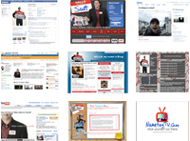 Are you a friend of The Nametag Network?
Are you a friend of The Nametag Network?
Read more blogs!
Rent Scott’s Brain!
Download articles and ebooks!
Watch training videos on NametagTV!
Make a name for yourself here…
 Pursue the Passion is a group of three recent college grads who embarked on cross country roadtrips to interview passionate professionals about their career paths.
Pursue the Passion is a group of three recent college grads who embarked on cross country roadtrips to interview passionate professionals about their career paths.  Their tour recently took them through St. Louis.
Their tour recently took them through St. Louis.  Anyway, totally cool guys with a totally cool idea.
Anyway, totally cool guys with a totally cool idea. 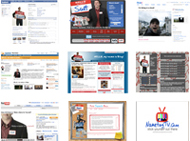 Are you a friend of The Nametag Network?
Are you a friend of The Nametag Network?
 Boundaries are saviors.
Boundaries are saviors. Are you a friend of
Are you a friend of  Looking for a GREAT way to start a conversation with a stranger?
Looking for a GREAT way to start a conversation with a stranger?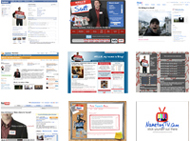 Are you a friend of
Are you a friend of  (To read part 1, click
(To read part 1, click 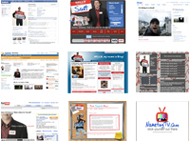 Are you a friend of
Are you a friend of  Adding value is essential to growing bigger ears.
Adding value is essential to growing bigger ears. Are you a friend of
Are you a friend of  Who are your mentors?
Who are your mentors?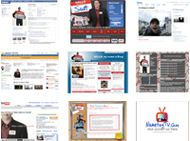 Are you a friend of
Are you a friend of  Call it optimism.
Call it optimism.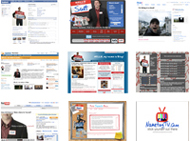 Are you a friend of
Are you a friend of  1. “If you build it, they will come.”
1. “If you build it, they will come.” 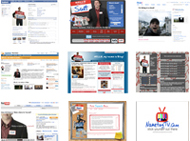 Are you a friend of
Are you a friend of  Be clearly superior.
Be clearly superior.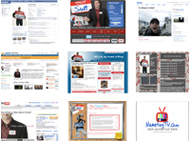 Are you a friend of
Are you a friend of  I hate to say it, but you’re really no big deal.
I hate to say it, but you’re really no big deal.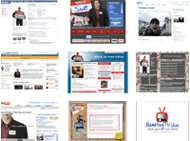 Are you a friend of
Are you a friend of